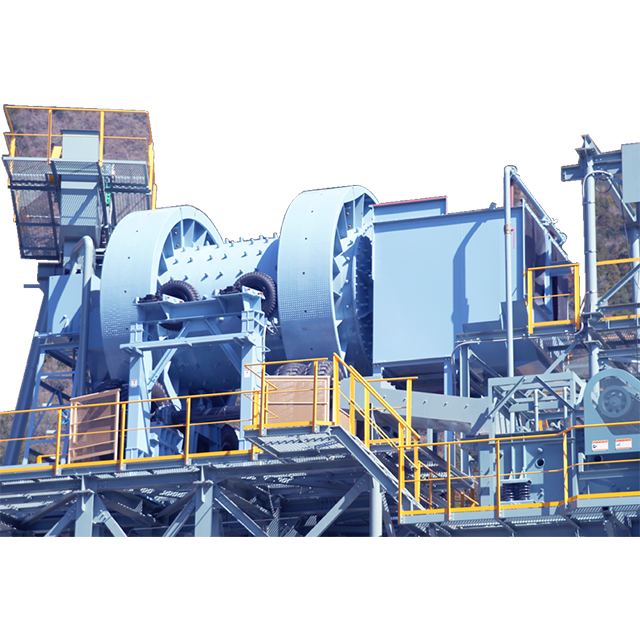Crushing/Grinding
REXE MILL
SAND MAKING MACHINE FROM CRUSHED STONE
REXE MILL is ETCL’s original Ball Mill and can make manufacturing sand similar quality to natural sand as the wet system. ETCL has been supplying traditional gear drive type Ball Mill & Rod Mill. Further to gear drive type, unique design of Tire driving type, “New Rod Mill” and “New Ball Mill” was developed, of which features are lower power consumption, easier maintenance and low level of noise. REXE MILL is evolved from Gear Reducer and tire driving system to achieve more stable operation and further easier maintenance by original ETCL technology.

FEATURES
- Produce excellent quality sand
-
- Similar quality of sand to natural sand from crushed stone by ball grinding with wet system.
- Clean sand from sticky and much soil material by wet system
- Higher capacity and high crushing reduction
- Improved liner design for more effective crushing and grinding.
- Various size of sand produced from various feed material
- Max. 40mm size stone feeding. Surplus material can be changed to valuable sand.
- Adjustable for both coarse and fine sand
- Unique tire driving system by original gear reducer
- Lower power consumption and more effective operation.
- Easy maintenance and simple mechanism by 2 units of Gear Reducer driving.
- Quiet operation and simple foundation
- Easy and Safety Maintenance
- Worn steel ball is automatically discharged.
- Gear Reducer is oil bath system and easy routine maintenance
MODEL AND CAPACITY
| Model | Shell size (m) | Capacity (tph) | Volume of Ball (ton) | Motor |
|---|---|---|---|---|
| ENB 19 | Φ1.9 x 3.3 | 40 ± 25% | ~ max. 13 ton | 75 kw x 2 pcs |
| ENB 21 | Φ2.1 x 3.6 | 55 ± 25% | ~ max. 18 ton | 110 kw x 2 pcs |
| ENB 24 | Φ2.4 x 4.2 | 95 ± 25% | ~ max. 26 ton | 165 kw x 2 pcs |
- Note1. Capacity is based on the conditions that bulk density is 1.6 t/m3 (with feed size less than discharge setting not included) and that stone having compressive strength approximately ranging from 1000 kg/cm2 to 1250 kg/cm2 is fed into the crusher evenly and continuously.
- Note2. Maximum feed size is for the case where pit gravel is primarily or secondarily crushed. In case of cobble gravel, use the said thickness values as the standard.
- Note3. Actual capacity may vary due to characteristics and conditions of feed material (such as compressive strength, size distribution, etc.).
- Note4. The contents in this page shall be subject to alternation without prior notice due to improvement, modification, etc.
